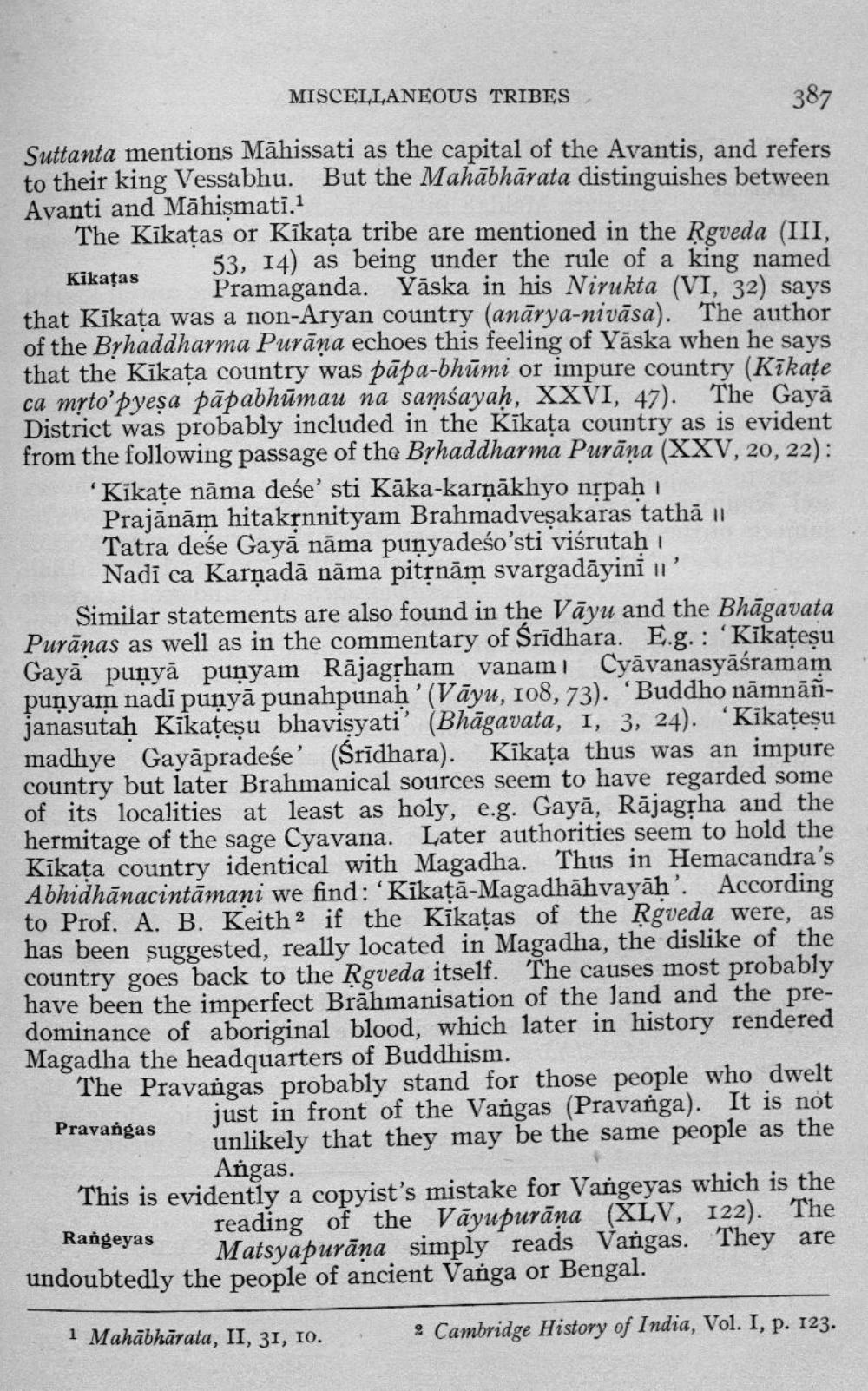________________
MISCELLANEOUS TRIBES
387 Suttanta mentions Māhissati as the capital of the Avantis, and refers to their king Vessabhu. But the Mahābhārata distinguishes between Avanti and Māhismati.1 The Kikatas or Kikața tribe are mentioned in the Rgveda (III,
53, 14) as being under the rule of a king named Kikațas
Pramaganda. Yāska in his Nirukta (VI, 32) says that Kikata was a non-Aryan country (anārya-nivāsa). The author of the Byhaddharma Purāna echoes this feeling of Yāska when he says that the Kikața country was pāpa-bhūmi or impure country (Kīkate ca myto'pyesa pāpabhūmau na samsayaḥ, XXVI, 47). The Gayā District was probably included in the Kikața country as is evident from the following passage of the Byhaddharma Purāna (XXV, 20, 22):
Kīkate nāma dese' sti Kāka-karņākhyo nrpahi Prajānām hitakrnnityam Brahmadveşakaras tathā il Tatra dese Gayā nāma punyadeśo'sti viśrutah
Nadi ca Karṇadā nāma pitsnām svargadāyini ii'
Similar statements are also found in the Vāyu and the Bhāgavata Purānas as well as in the commentary of Sridhara. E.g. : 'Kikațesu Gayā punyā punyam Rājagsham vanami Cyāvanasyāśramam punyam nadi punyā punahpunah'(Vāyu, 108, 73). ‘Buddho nāmnāñjanasutah Kikateşu bhavisyati' (Bhāgavata, 1, 3, 24). “Kikateşu madhye Gayāpradeśe' (Śrīdhara). Kīkața thus was an impure country but later Brahmanical sources seem to have regarded some of its localities at least as holy, e.g. Gayā, Rājagļha and the hermitage of the sage Cyavana. Later authorities seem to hold the Kīkața country identical with Magadha. Thus in Hemacandra's Abhidhānacintămani we find: 'Kikatā-Magadhāhvayāh'. According to Prof. A. B. Keith 2 if the Kikatas of the Rgveda were, as has been suggested, really located in Magadha, the dislike of the country goes back to the Rgveda itself. The causes most probably have been the imperfect Brāhmanisation of the land and the predominance of aboriginal blood, which later in history rendered Magadha the headquarters of Buddhism.
The Pravangas probably stand for those people who dwelt Pravangas just in front of the Vangas (Pravanga). It is not
unlikely that they may be the same people as the
Angas. This is evidently a copyist's mistake for Vangeyas which is the
reading of the Vāyupurāna (XLV, 122). The Rangeyas
18 Matsyapurāna simply reads Vangas. They are undoubtedly the people of ancient Vanga or Bengal.
1 Mahābhārata, II, 31, 10.
. Cambridge History of India, Vol. I, p. 123.




